Abstract
Red and far red light distinctly influence the initial phytochrome-mediated phase of cold acclimation in red-osier dogwood (Cornus stolonifera). Under controlled conditions, short days and end-of-day far red light exposure after long days promote growth cessation, cold acclimation, and subsequent cold hardening of dogwood stems in response to low temperature. Nuclear magnetic resonance absorption spectra of the water in internode stem sections imply that the short day-induced phase of cold acclimation involves a change in tissue hydration, at least in part, due to a substantial reduction in bulk phase water as a result of senescence and loss of water from the pith. Seasonal responses to light and an attempt to induce early acclimation under natural conditions with end-of-day far red light are discussed.
Full text
PDF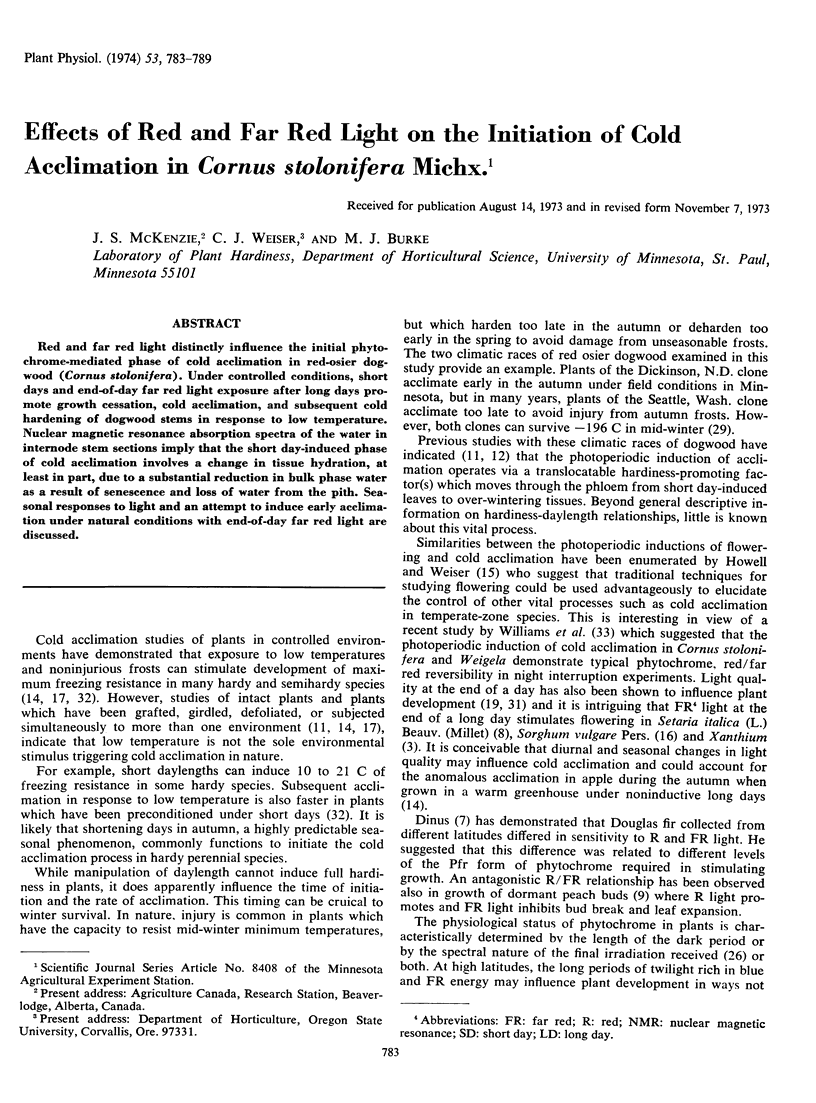
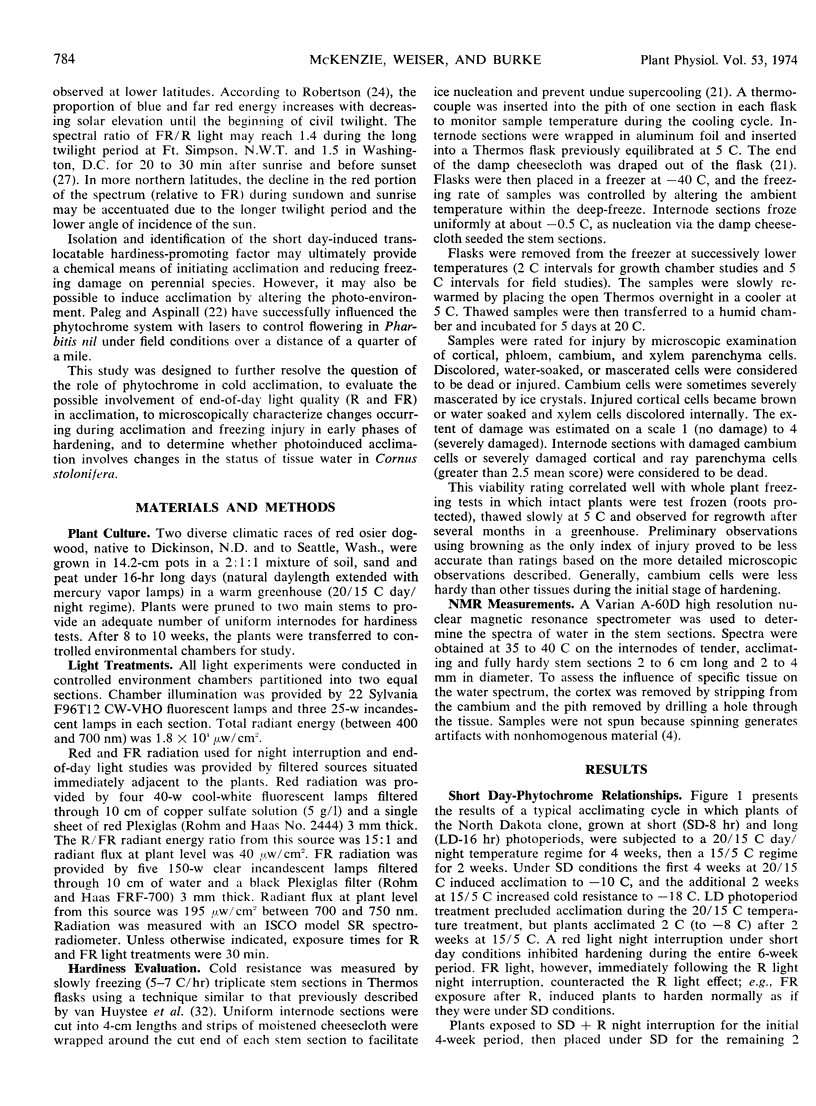
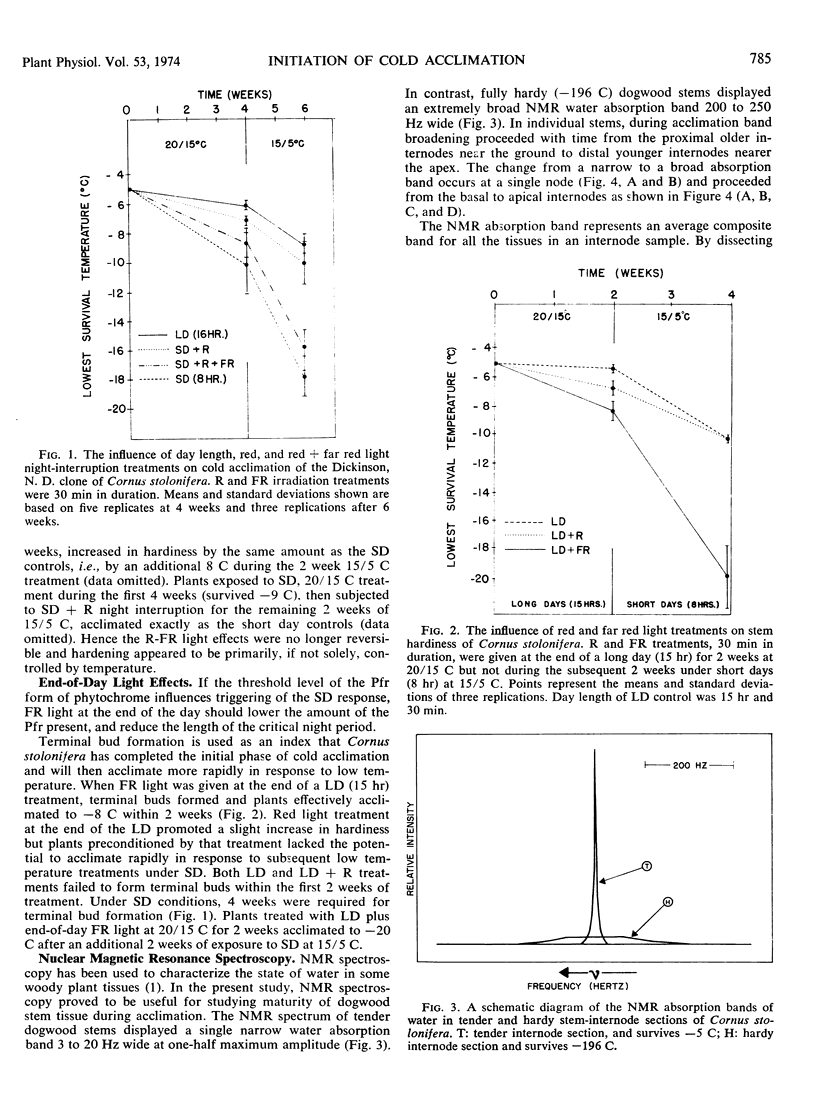
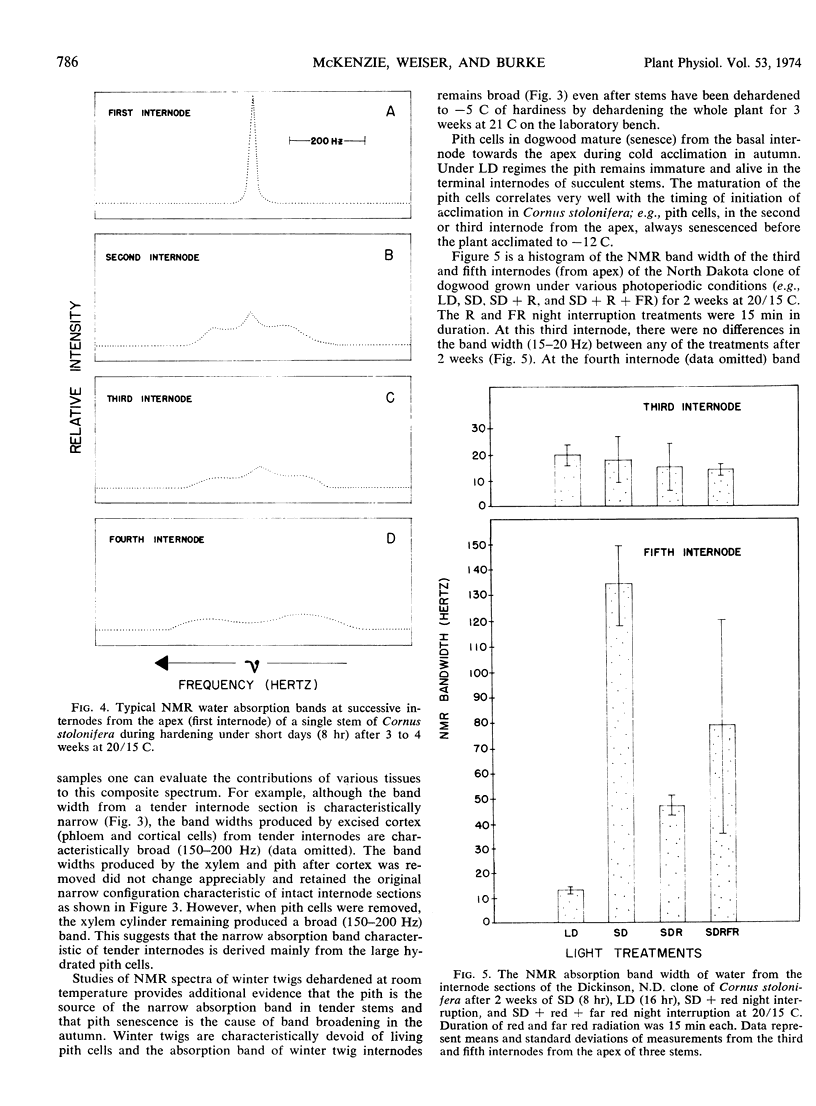
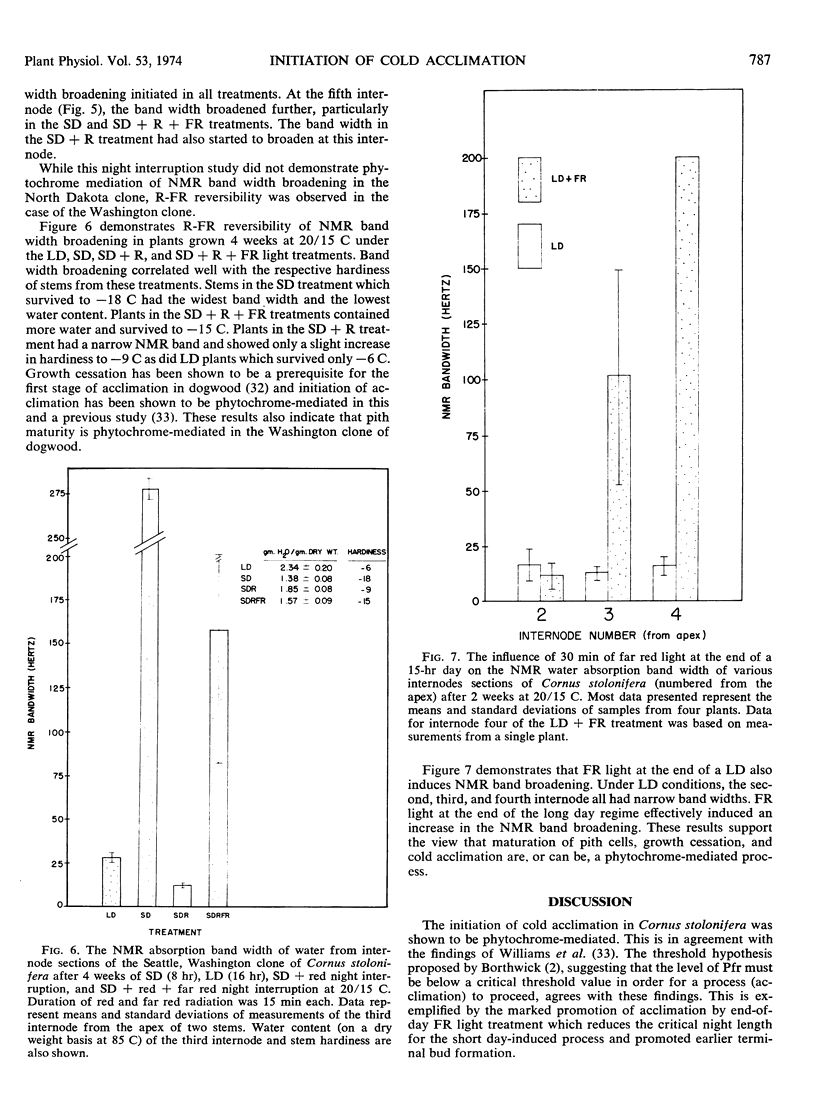
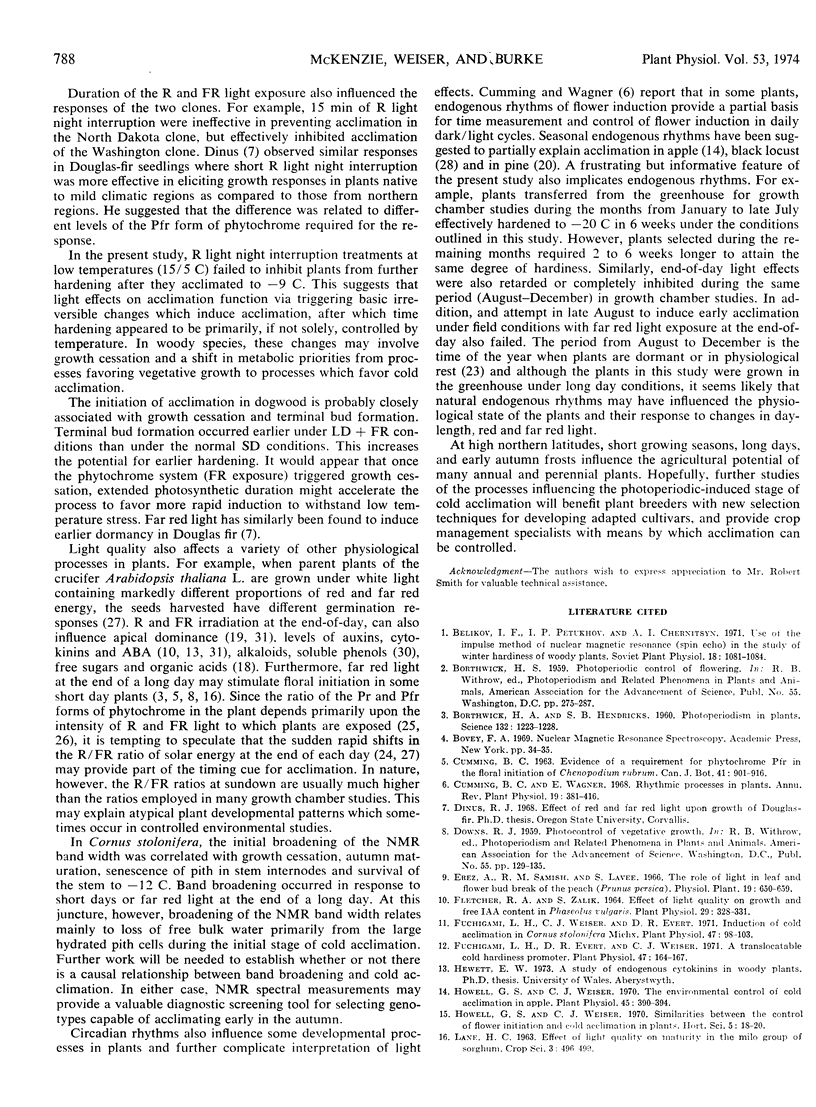

Selected References
These references are in PubMed. This may not be the complete list of references from this article.
- Borthwick H. A., Hendricks S. B. Photoperiodism in Plants. Science. 1960 Oct 28;132(3435):1223–1228. doi: 10.1126/science.132.3435.1223. [DOI] [PubMed] [Google Scholar]
- Fletcher R. A., Zalik S. Effect of Light Quality on Growth and Free Indoleacetic Acid Content in Phaseolus vulgaris. Plant Physiol. 1964 May;39(3):328–331. doi: 10.1104/pp.39.3.328. [DOI] [PMC free article] [PubMed] [Google Scholar]
- Fuchigami L. H., Evert D. R., Weiser C. J. A translocatable cold hardiness promoter. Plant Physiol. 1971 Jan;47(1):164–167. doi: 10.1104/pp.47.1.164. [DOI] [PMC free article] [PubMed] [Google Scholar]
- Fuchigami L. H., Weiser C. J., Evert D. R. Induction of Cold Acclimation in Cornus stolonifera Michx. Plant Physiol. 1971 Jan;47(1):98–103. doi: 10.1104/pp.47.1.98. [DOI] [PMC free article] [PubMed] [Google Scholar]
- Howell G. S., Weiser C. J. The environmental control of cold acclimation in apple. Plant Physiol. 1970 Apr;45(4):390–394. doi: 10.1104/pp.45.4.390. [DOI] [PMC free article] [PubMed] [Google Scholar]
- Irving R. M., Lanphear F. O. Environmental control of cold hardiness in woody plants. Plant Physiol. 1967 Sep;42(9):1191–1196. doi: 10.1104/pp.42.9.1191. [DOI] [PMC free article] [PubMed] [Google Scholar]
- Kasperbauer M. J. Spectral Distribution of Light in a Tobacco Canopy and Effects of End-of-Day Light Quality on Growth and Development. Plant Physiol. 1971 Jun;47(6):775–778. doi: 10.1104/pp.47.6.775. [DOI] [PMC free article] [PubMed] [Google Scholar]
- Paleg L. G., Aspinall D. Field control of plant growth and development through the laser activation of phytochrome. Nature. 1970 Dec 5;228(5275):970–973. doi: 10.1038/228970a0. [DOI] [PubMed] [Google Scholar]
- Perry T. O. Dormancy of trees in winter. Science. 1971 Jan 8;171(3966):29–36. doi: 10.1126/science.171.3966.29. [DOI] [PubMed] [Google Scholar]
- Shropshire W., Jr Phytochrome, a photochromic sensor. Photophysiology. 1972;(7):33–72. [PubMed] [Google Scholar]
- Tso T. C., Kasperbauer M. J., Sorokin T. P. Effect of photoperiod and end-of-day light quality on alkaloids and phenolic compounds of tobacco. Plant Physiol. 1970 Mar;45(3):330–333. doi: 10.1104/pp.45.3.330. [DOI] [PMC free article] [PubMed] [Google Scholar]
- Williams B. J., Pellett N. E., Klein R. M. Phytochrome control of growth cessation and initiation of cold acclimation in selected woody plants. Plant Physiol. 1972 Aug;50(2):262–265. doi: 10.1104/pp.50.2.262. [DOI] [PMC free article] [PubMed] [Google Scholar]


